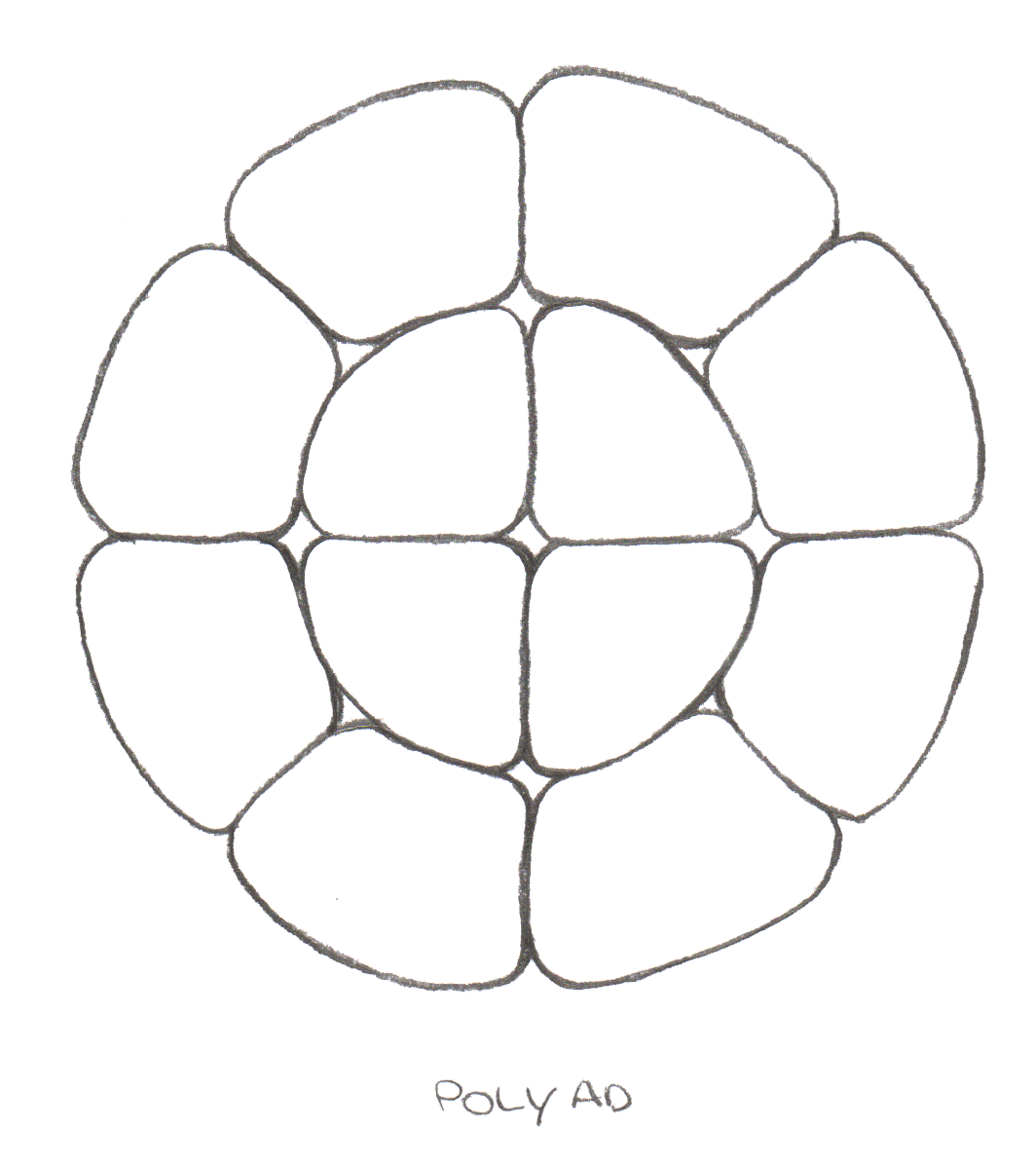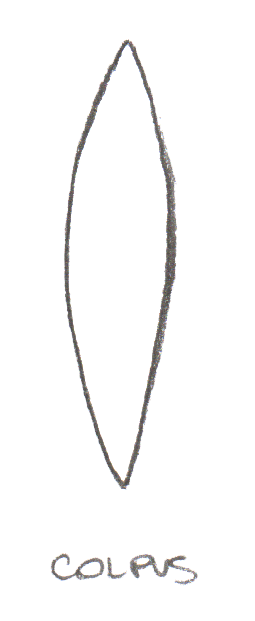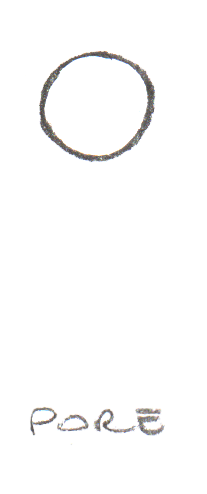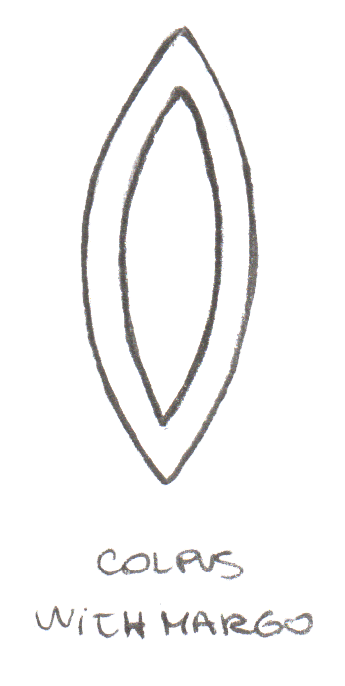Palinology (under construction).
Pollen grains may be in the solitary form or in groups of two or more.
According to the different types of grouping (clustering) are distinguished:
1. solitary grains, include the monad that can be divided in:
- Eumonad, simply called monad, single grain from a tetrad that issued the individual units in the atmosphere.
- Monad ss, solitary pollen grain belonging to a tetrad or polyad: pollen unity composed of 8-10-12-16-24-32 pollen grains. which only rarely at the single state is released to the atmosphere
-Pseudomonad or criptotetrad, lonely grain, equivalent to a tetrad where three of the four units have not been developed.
2. pollen grains into groups, include pollen grouped into 2, 4, 8, 16, units etc..
- dyad: unit formed by two grains of the same size. The four grains of the tetrad are emitted into the atmosphere in groups of two. The dyad is generally not widespread: it is occasionally found in Gymnosperms, it is rare in Angiosperms. while in Monocotyledones is only represented.
- tetrad: unit formed by four grains mostly of the same size, the four granules originating from the mother cell’s division are emitted into the atmosphere together. The space arrangement of individual elements composing the tetrads can be:
a) uniplanar when individual granules are on the same floor. The shape can be tetragonal, square and rhomboidal if each unit, of the tetrad, is more or less in contact with all the others.)
b) multiplanar when individual granules are located on different plane. The form, which results when the two pairs are arranged at right angles between them, is called decussata, otherwise when units are located at the vertices of a tetrahedron is called tetrahedral.

- polyad: units group consisting of multiples of tetrads, coming from at least two mothers cells.
- massula: large mass of pollen grains, partially fused together.
- pollinium: several massulae, which represents the contents of a single pollen sac.
Polarity
Polarity: pollen characteristics to possess two endowed poles of equal or different features....
is the pollen characteristic to possess two endowed poles of equal or different features. A pollen grain is considered like a globe with two poles and the equator and its polarity is defined in the stadium of meiotic tetrad. The polarity is considered absolute if it derives from the direct observation of the single pollen grains orientation in the tetrad. In every pollen grain is possible to distinguish two areas:
- polar-proximal is the area next to the tetrad’s centre,
- polar-distal is the area next to the tetrad’s outer.
The centre of the two areas is called pole, respectively proximal and distal; the line that passes through the poles and the center of the granule is the polar axis and it is always unique. The line that runs circularly on the surface of the granule, halfway between the two poles, is the equator. The plane passing through the equator, is called the equatorial plane.
The polarity observed in the monads is called “apparent” because it is determined according to indirect criteria (p.e. apertures position).
The absolute and apparent polarity usually are coincident and in practice reference is made to the apparent one, particularly in the case of monads in which the belonging tetrad is no longer observable.
The presence or absence of the pollen polarity allows them to be divided in two groups:
1. Polar
pollen: regroups the pollens with a distinct polarity that is recognizable. They are pollen grains with equatorial or polar apertures. The polar pollen can be distinguished in three types:
a) Isopolar
pollen: it is the grain in which the two poles are equal and the equatorial plane divides the pollen in two equal parts.
- Subisopolar
pollen: it is the grain in which the two polar areas are not completely equal. - Heteropolar
pollen Anisopolar
pollen): it is the grain in which the two areas have a different shape (e.g. one is with apertures and the other without) - Apolar
pollen: it is a grain without an apparent polarity, because the poles are not recognizable. It is a spherical and inaperturate pollen or with spread apertures over the entire surface of the granule.
Symmetry
Symmetry is the correspondence of the various parts of a pollen respect to a plane (bilateral symmetry) or an axis (radial symmetry). In the pollen grains there are two different kind of symmetry planes:
- Polar
plane includes the polar axis and passes through the poles of the granule (polar pollens), - Equatorial plane includes the equatorial diameter (polar pollens)
In apolar pollen vertical plane and polar plane are indistinguishable whereby it is called diameter plane.
A pollen grain is called symmetrical just if it has a symmetry plane. Every symmetry plane divides the grain in two opposite parts, equivalent for size and shape. When the symmetry planes are absent the pollen is called asymmetric.
A symmetric pollen can have symmetry axes too, ie lines that pass through the pollen centre. These axes are of two types:
- Polar axis
passes through the poles and it is included in the polar plane (polar pollens) - Equatorial axis
is the line passing through the equatorial plane and the center of the pollen
In apolar pollen vertical and polar axis are indistinguishable whereby it is called generically symmetry axis.
Finally a symmetry pollen is characterized by:
- one symmetry plane (bilateral symmetry)
- one symmetry axis (radial symmetry – polar pollen)
- one symmetry centre (radial symmetry – apolar pollen)
Aperture
Pollen grains usually have apertures just in some cases they haven’t (inaperturate). The apertures are areas in which the intine is thickened and the exine is thinner (respect to the rest of the wall) or missing. The apertures are the area of the normal output of the pollen tube at the time of germination. Traditional palynology usually characterizes apertures by their number (numerus), position (positio) and shape (caracter). The number can vary from N1 to N7: N1 is attributed to pollens with one aperture, N7 is for pollens with several apertures (>6). Inaperturate
pollens are marked with NO. The apertures have a precise location compared to the equator and the poles of the granule itself, when this is not defined pollen is called anomoaperturate. The possible positions are three:
- Polar: the apertures are at the poles or in the immediate vicinity.
- Equatorial: the apertures are at the equator or in its proximity,
- Global : the apertures are spread in a more or less regular manneron all the granule surface.
The position parameter in pollens has 7 variables from P0 to P6, in P0 the location of aperture is unknown, if the aperture is in a pole it is defined as proximal (P1) or distal (P3). P2 designates a pollen with two apertures, both at the poles. If the apertures are set in the equatorial zone then this is a zonal position (P4 and P5), pollens with apertures distributed over the whole granule surface (periaperturate with global position) are identified as P6.
Aperture are also characterized by their shape (C=caracter). There are three apertures types: elongated, like a sulcus.



If the edges of the apertures are not clear, are indicated by introducing the syllable –oid (p.e. colpoid, poroid) .
.
In C0 the aperture is indistinct, while in C1 it is represented by a more or less regular area. In C2 the aperture is divided into three anastomosed arms.
C3 is the term used for sulcus-shaped apertures and C4 for pore-shaped ones (porus). C5 is used for colporate  pollens.
pollens.
Lastly there are he C6 pororate pollens which have either a colpus or a pore externally and a circular oval part set in their




